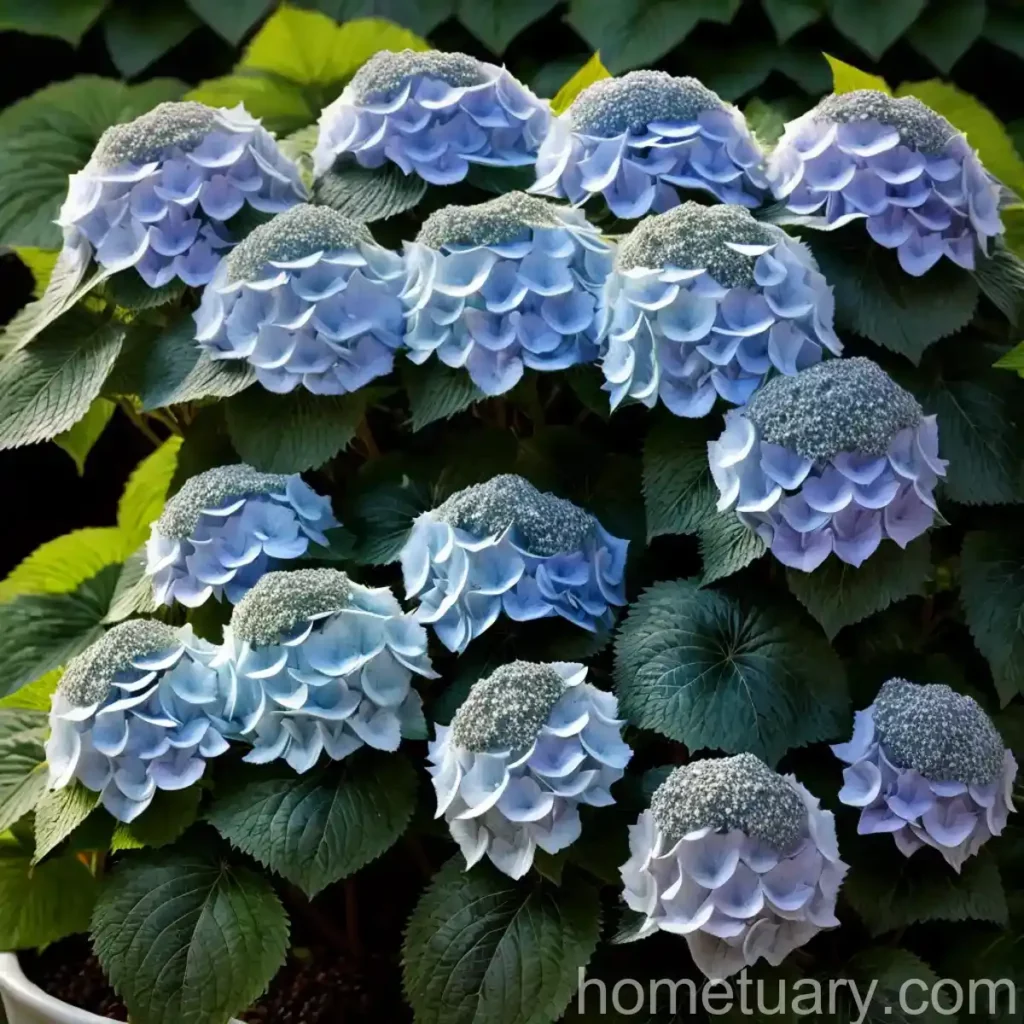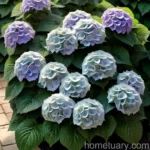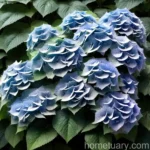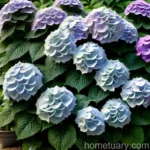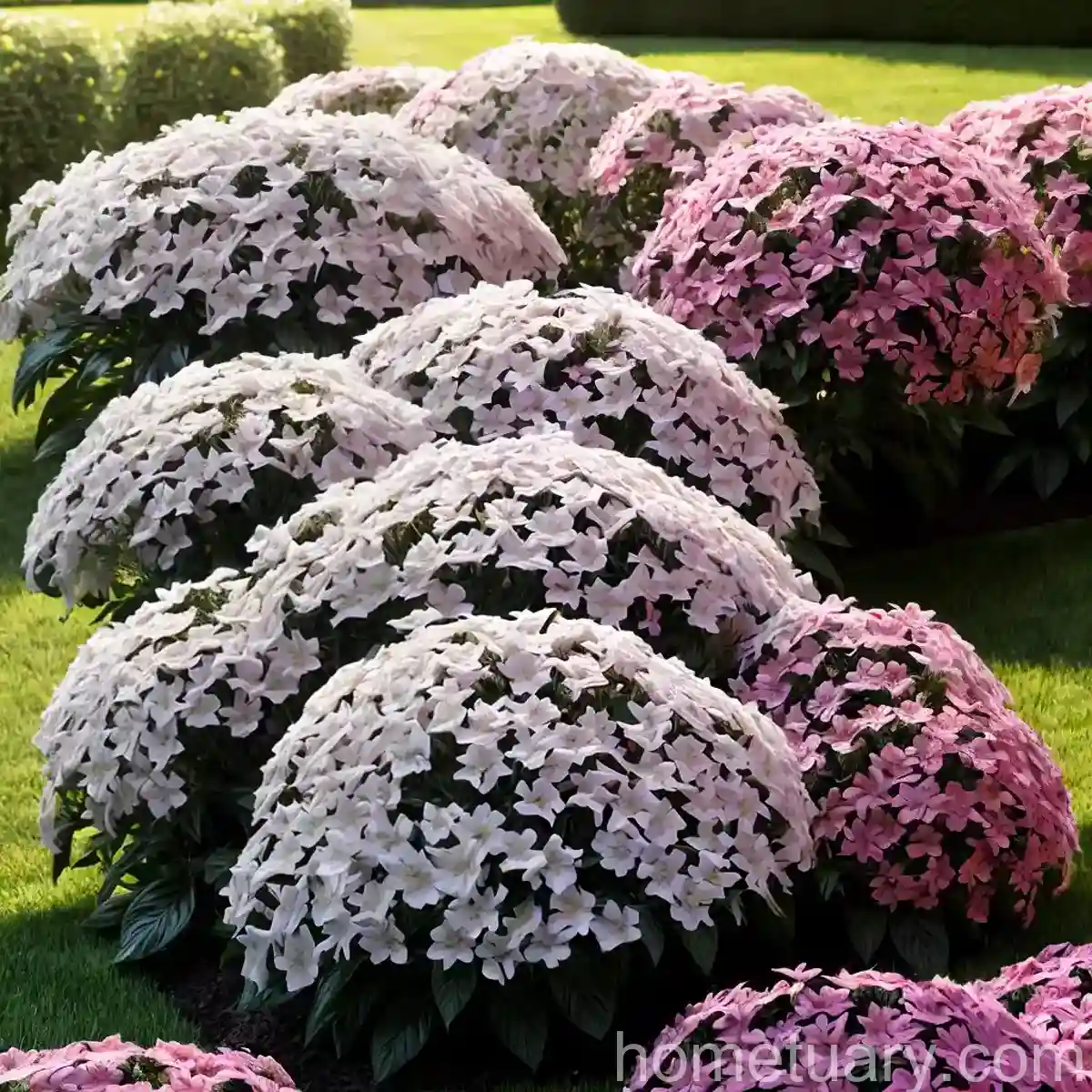Bigleaf Hydrangea (Hydrangea sargentiana): A Comprehensive Guide
Bigleaf hydrangea, scientifically known as Hydrangea sargentiana, is a stunning shrub that belongs to the Hydrangeaceae family. Its striking appearance, large leaves, and beautiful flowers make it a popular choice for gardens and landscapes. In this comprehensive guide, we will explore all aspects of bigleaf hydrangea, including its culture, uses, care requirements, common diseases, pests, and much more. Whether you are a seasoned gardener or a novice plant enthusiast, this article will provide valuable insights into maximizing the potential of Hydrangea sargentiana in your garden.
What is Bigleaf Hydrangea (Hydrangea sargentiana)?
Bigleaf hydrangea, or Hydrangea sargentiana, is a deciduous shrub native to the Himalayas, particularly in China and Tibet. It is characterized by its large, serrated leaves and showy flower clusters, which can range in color from white to pink or blue depending on the soil pH. The plant typically thrives in temperate climates and is prized for its ornamental and landscaping value.
Key Takeaways – Bigleaf Hydrangea (Hydrangea sargentiana)
Before delving into the specifics of bigleaf hydrangea care and cultivation, let’s highlight some key takeaways about this captivating plant:
- Plant Name: Bigleaf Hydrangea (Hydrangea sargentiana)
- Family: Hydrangeaceae
- Origin: China and Tibet, Himalayan region
- Growth Habit: Deciduous shrub
- Notable Features: Large, serrated leaves; showy flower clusters; variable flower colors
- Cultural Uses: Ornamental gardens, landscaping, cut flower arrangements
With these key points in mind, we can now explore the essential aspects of cultivating, maintaining, and enjoying the beauty of Hydrangea sargentiana.
Culture
Water
Proper watering is essential for the health and vitality of bigleaf hydrangea. This plant thrives in consistently moist soil, especially during the active growing season. However, it is equally important to ensure good drainage to prevent waterlogging, which can lead to root rot and other moisture-related issues.
- Watering Needs: Regular, consistent moisture
- Frequency: Water deeply when the soil begins to dry out, typically 1-2 times per week depending on weather conditions
- Avoid Overhead Watering: To prevent fungal diseases and flower damage, water at the base of the plant rather than overhead
Sunlight
Bigleaf hydrangea exhibits a preference for dappled or partial shade, especially in regions with hot summers. While it can tolerate some morning sun, it generally benefits from protection against the intense afternoon sun. In cooler climates, it may thrive in more sunlit locations.
- Ideal Conditions: Dappled or partial shade
- Morning Sun: Tolerated, but protection from intense afternoon sun is beneficial
- Exposure: Sheltered locations in hot climates, more sun tolerance in cooler regions
Fertilizer
Fertilizing bigleaf hydrangea can support robust growth and plentiful blooms. However, it is important to apply fertilizers judiciously to avoid excessive vegetative growth at the expense of flower production.
- Fertilizer Type: Balanced, slow-release fertilizer formulated for flowering shrubs
- Application Timing: Early spring, just before new growth emerges
- Avoid High-Nitrogen Fertilizers: Excessive nitrogen can lead to lush foliage but fewer blooms
Soil
The soil characteristics play a crucial role in the overall health and performance of bigleaf hydrangea. Well-draining, loamy soils with adequate organic matter content are particularly well-suited for this plant.
- pH Preference: Slightly acidic to neutral soil (pH 5.5-7.0)
- Texture: Well-draining loam with good moisture retention
- Organic Matter: Incorporate compost or well-rotted organic material to enhance soil structure and fertility
Pruning
Appropriate pruning can help maintain the shape, size, and vigor of bigleaf hydrangea. Understanding different varieties of Hydrangea sargentiana and their flowering habits is critical for effective pruning.
- Pruning Time: Immediately after flowering or in late winter/early spring before new growth appears
- Flower Removal: Prune out old flower heads to encourage new growth and potential reblooming
- Size Control: Trim back overgrown or leggy branches to promote a more compact and aesthetically pleasing form
Propagation
Propagating bigleaf hydrangea allows gardeners to expand their collection of these beautiful shrubs. Several methods, including stem cuttings and division, can be employed to propagate new plants.
- Stem Cuttings: Select healthy, non-flowering stems in early summer and root them in a moist, well-draining medium
- Division: During the dormant season, divide established plants into smaller sections, ensuring that each division has sufficient roots and growing points
- Rooting Hormone: Use a rooting hormone to enhance the success rate of stem cuttings
Container Popularity
Bigleaf hydrangea can thrive in containers, making it a versatile choice for small gardens, patios, and balconies. When grown in containers, attention to watering, fertilizing, and providing adequate space for root development is crucial.
- Container Size: Choose a container that accommodates the plant’s mature size and allows for proper root development
- Drainage: Ensure that containers have sufficient drainage holes to prevent waterlogging
- Regular Monitoring: Check moisture levels regularly and adjust watering frequency as needed
Common Diseases
Understanding the common diseases that affect bigleaf hydrangea is instrumental in implementing preventive measures and early intervention when necessary.
Disease Diagnosis
- Powdery Mildew: White powdery spots on leaves, often in humid conditions
- Gray Mold (Botrytis): Gray, fuzzy growth on flowers and buds, particularly in wet or cool conditions
- Leaf Spot: Dark spots or lesions on leaves, sometimes accompanied by yellowing or browning
Common Pests
Various pests can pose a threat to bigleaf hydrangea, potentially causing damage to foliage, flowers, or overall plant health.
- Aphids: Small, soft-bodied insects that may cluster on new growth, causing distortion and yellowing of leaves
- Snails and Slugs: Feed on tender foliage and flowers, leaving irregular holes and damage
- Spider Mites: Tiny pests that can cause stippling and discoloration of leaves, especially in hot, dry conditions
Botanist’s Tips
Seasoned botanists and horticulturists often have valuable insights and tips for successfully growing and enjoying bigleaf hydrangea. Here are some expert recommendations:
- Soil Preparation: Prior to planting, amend the soil with organic matter and ensure proper drainage to create an optimal growing environment for bigleaf hydrangea.
- Mulching: Apply a layer of mulch around the base of the plant to conserve moisture, regulate soil temperature, and suppress weed growth.
- pH Management: Adjusting the soil pH can influence the flower color of certain bigleaf hydrangea varieties, with acidic soils promoting blue blooms and more alkaline soils leading to pink blooms.
Fun Facts
To enhance your appreciation for bigleaf hydrangea, here are some intriguing and delightful tidbits about this captivating plant:
- The large, vibrant flower clusters of bigleaf hydrangea make excellent cut flowers for arrangements and bouquets.
- Some cultivars of Hydrangea sargentiana showcase remarkable color changes in their flowers, transitioning from one hue to another as the blooms age.
- Bigleaf hydrangea is a favorite in wildlife gardens, attracting pollinators such as bees and butterflies with its abundant nectar and pollen.
Links to External Resources
For additional information and resources on bigleaf hydrangea care, cultivation, and landscaping, consider exploring the following links:
- American Hydrangea Society: A rich source of hydrangea-related knowledge, including species profiles, cultural tips, and gardening resources.
- The Royal Horticultural Society (RHS) – Hydrangeas: The RHS offers expert advice on growing hydrangeas, including specific guidance on pruning, propagation, and pest management.
In conclusion, bigleaf hydrangea (Hydrangea sargentiana) is an enchanting plant that can elevate the visual appeal of any garden or landscape. By understanding its cultural needs, maintenance requirements, and potential challenges, you can cultivate thriving, beautiful specimens of this remarkable shrub. Whether you are drawn to its lush foliage, captivating flowers, or versatility in garden design, bigleaf hydrangea presents a wealth of possibilities for plant enthusiasts and horticultural aficionados. With thoughtful care and attention, this stunning shrub can grace your outdoor spaces with enduring beauty and charm.

